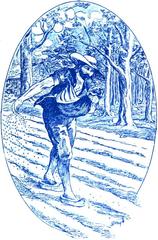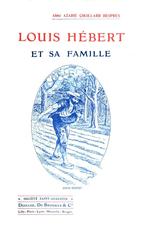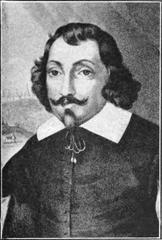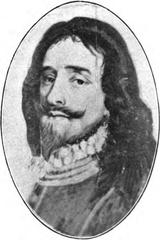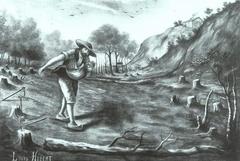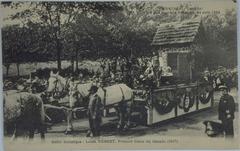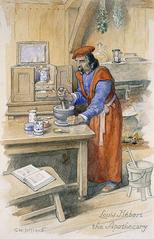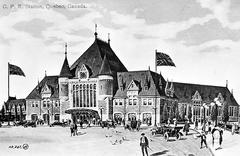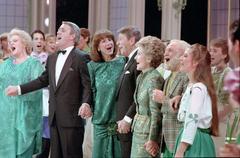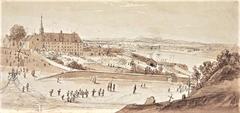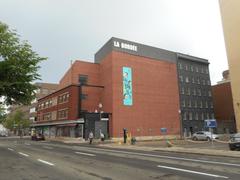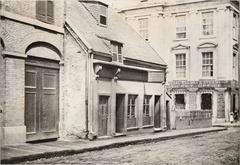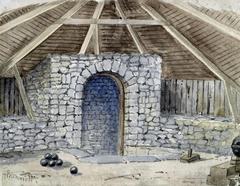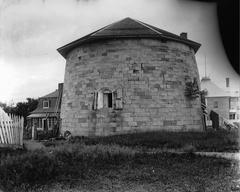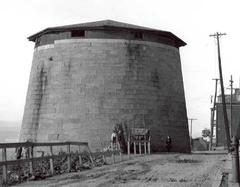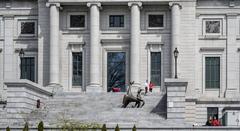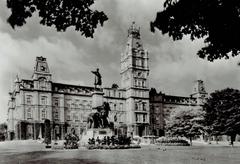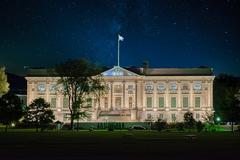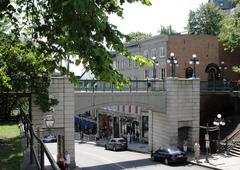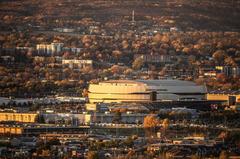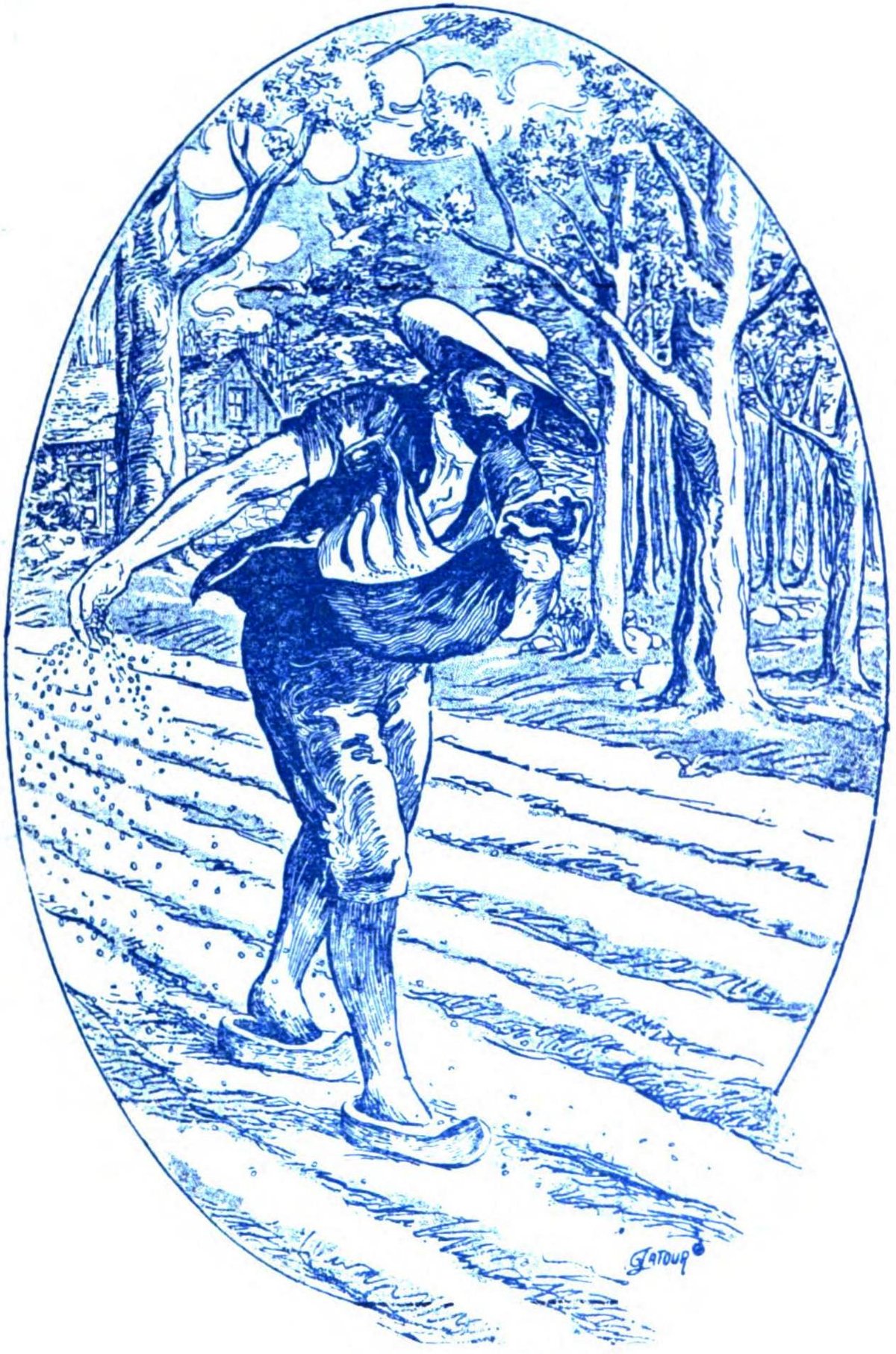
Louis Hébert Visiting Hours, Tickets, and Comprehensive Guide to Quebec City Historical Sites
Date: 14/06/2025
Introduction: Discovering Louis Hébert’s Legacy in Quebec City
Quebec City’s storied colonial heritage is deeply intertwined with the life and legacy of Louis Hébert, the first European settler to establish a permanent family farm and serve as New France’s pioneering apothecary. His vital contributions to medicine, agriculture, and community-building laid the foundation for the city’s growth and resilience. Today, visitors can immerse themselves in history by exploring monuments, archaeological sites, museums, and walking circuits that shed light on the daily life and enduring spirit of early settlers.
This guide provides all the essential information for visiting key Louis Hébert historical sites, such as the Monument Louis-Hébert at Parc Montmorency, Place Louis-Hébert, and the Hébert Family Home Site. You’ll find practical details about visiting hours, ticketing, accessibility, guided tours, and travel tips, as well as insights into cultural events and photography opportunities. Whether you’re a history enthusiast, a cultural traveler, or a casual visitor, this resource helps you appreciate the lasting impact of one of Quebec’s foundational pioneers. For additional planning resources, see Musée de l’Amérique francophone and Quebec City Tourism.
Table of Contents
- Introduction
- Early Life and Arrival of Louis Hébert
- Key Contributions of Louis Hébert
- Main Historical Sites: Locations, Visiting Hours, and Tickets
- Guided Tours and Events
- Practical Tips for Visitors
- Nearby Attractions and Amenities
- Frequently Asked Questions (FAQ)
- Visual and Interactive Elements
- Conclusion and Planning Resources
- References and Official Links
Early Life and Arrival of Louis Hébert
Born in Paris in 1575, Louis Hébert was raised in a family of apothecaries, equipping him with crucial medicinal and botanical knowledge. He married Marie Rollet, and together with their children, journeyed to New France in 1617, becoming the first permanent European family in Quebec City. Hébert initially worked in Acadia with Samuel de Champlain before accepting the challenge of building a life in the harsh conditions of Quebec, where his skills proved invaluable for the fledgling colony.
Key Contributions of Louis Hébert
Medical Services
As New France’s first apothecary, Hébert provided essential medical care to both settlers and Indigenous communities. His expertise in botany enabled him to treat scurvy and other illnesses, greatly improving the colony’s survival rates.
Agricultural Innovation
Hébert became the first European farmer in Quebec, introducing wheat, corn, beans, and the first ox for ploughing. His work transformed Quebec from a fur-trading outpost into a sustainable settlement, ensuring food security and economic stability (The Canadian Encyclopedia).
Relations with Indigenous Peoples
Hébert fostered respectful exchanges with Indigenous peoples, learning survival skills and sharing medical knowledge. These relationships were critical for the survival and growth of the early colony.
Main Louis Hébert Historical Sites: Locations, Visiting Hours, and Tickets
1. Place Louis-Hébert
- Description: Public square in Old Quebec featuring a statue of Louis Hébert with farming tools, commemorating his contributions.
- Visiting Hours: Open year-round, 24/7.
- Tickets: Free.
- Accessibility: Pedestrian-friendly, with ramps nearby. Caution due to cobblestones.
- Nearby Attractions: Quebec City ramparts, Château Frontenac.
2. Hébert Family Home Site
- Description: Outdoor location marked by plaques and interpretive panels describing the Hébert family’s life.
- Visiting Hours: Accessible year-round.
- Tickets: Free.
- Accessibility: Pedestrian access; some uneven ground.
3. Musée de l’Amérique francophone
- Description: Museum with exhibits on French North American history, including Louis Hébert and early settlers.
- Visiting Hours: Tuesday to Sunday, 10:00 AM–5:00 PM; closed Mondays (verify hours online).
- Tickets: Adults CAD 10; seniors/students CAD 7; children under 12 free.
- Accessibility: Fully wheelchair accessible; assistive listening devices available.
- Official Website: Musée de l’Amérique francophone
4. Monument Louis-Hébert at Parc Montmorency
- Description: Erected in 1918, this monument features high-relief sculptures of Hébert and his family, symbolizing the birth of agriculture in New France. It stands on the site of Hébert’s original farm, near the Notre-Dame Cathedral Basilica (Quebec Chronicle Telegraph).
- Location: Parc Montmorency, Old Quebec.
- Visiting Hours: Dawn to dusk, daily.
- Tickets: Free.
- Accessibility: Wheelchair accessible with paved pathways and parking nearby.
5. Additional Sites
Terrasse Pierre-Dugua-De Mons
- Location: Avenue Saint-Denis.
- Visiting Hours: Open year-round; public access.
- Admission: Free.
- Significance: Features a bust of Pierre Dugua de Mons, under whom Hébert served in Acadia.
Archaeological Site of Hébert’s Home
- Location: Backyard of Séminaire de Québec (la cour des Petits).
- Access: By guided tour only; check with local tourism offices (cfqlmc.org).
Récollets Cemetery and Hôpital général de Québec
- Location: 260 Boulevard Langelier.
- Visiting Hours: Grounds accessible during hospital visiting hours.
- Significance: Hébert was originally buried in the Récollets cemetery.
Place d’Armes and the Louis Hébert & Marie Rollet Walking Circuit
- Route: Includes Rue Couillard, Rue Saint-Flavien, Rue des Remparts.
- Access: Self-guided and guided options available; maps at quebec-cite.com.
Guided Tours and Special Events
Several local tour operators and heritage organizations offer guided tours (available in English and French) that feature Louis Hébert sites and provide in-depth historical context. Special events such as the Fête de la Nouvelle-France and the 400th anniversary of Hébert’s arrival often include reenactments, themed programming, and educational activities. Check Quebec City Tourism and Musée de l’Amérique francophone for up-to-date schedules.
Practical Tips for Visitors
- Getting There: Most sites are in Old Quebec, easily reached by foot, public transit, or taxi. Closest transit stop: Place d’Armes (RTC bus system).
- Best Times to Visit: Summer brings festivals and crowds; fall offers beautiful foliage and fewer tourists; winter features Carnaval de Québec; spring is quieter but weather may be variable.
- Accessibility: Most outdoor sites are wheelchair accessible, though some have cobblestones or slight slopes. Archaeological sites may have limited access.
- What to Bring: Dress for the season. Wear comfortable footwear and bring sun or weather protection.
- Safety: Old Quebec is generally safe; exercise caution on icy streets in winter and stay hydrated during summer.
- Language: Interpretive materials and tours are available in English and French.
Nearby Attractions and Amenities
- Restrooms: Found at Place d’Armes, City Hall, and Place d’Youville.
- Dining: Numerous cafés and restaurants nearby, including Restaurant Louis Hébert, offer Quebecois and New France-inspired cuisine.
- Shopping: Art galleries and boutiques on Rue du Trésor and surrounding streets provide local crafts and souvenirs.
Frequently Asked Questions (FAQ)
Q: Are there entrance fees for Louis Hébert sites?
A: Most sites are free; guided tours and museum admission may require fees.
Q: What are the visiting hours for the main sites?
A: Outdoor monuments and squares are accessible 24/7; museums and guided tours have specific hours—check ahead.
Q: Are the sites wheelchair accessible?
A: Yes, most are accessible, though some areas may have uneven surfaces.
Q: Are guided tours available?
A: Yes, both scheduled and private tours are offered in multiple languages.
Q: Can I take photographs?
A: Photography is encouraged.
Q: Where can I find maps and self-guided tour resources?
A: Download from cfqlmc.org and quebec-cite.com.
Visual and Interactive Elements
- Images: Include high-quality photos of the Louis Hébert Monument, Place Louis-Hébert, and the archaeological site foundations. Alt text example: “Louis Hébert Monument in Old Quebec City with Château Frontenac in background.”
- Maps: Use interactive walking circuits highlighting main Louis Hébert sites.
- Virtual Tours: Available through official tourism portals and the Audiala app.
Conclusion: Plan Your Louis Hébert Experience
Exploring Louis Hébert’s historical sites in Quebec City offers a meaningful journey into the origins of New France. From the iconic monument at Parc Montmorency and the interpretive panels of the Hébert Family Home Site to the immersive exhibits at the Musée de l’Amérique francophone, each destination reveals the courage and innovation of Quebec’s first European settler family. With accessible walking circuits, engaging guided tours, and rich heritage programming, visitors can connect deeply with the stories that shaped this UNESCO World Heritage city.
To optimize your trip, check official websites for current hours and events, download the Audiala app for interactive audio tours, and follow local tourism channels for the latest updates. Step into history and celebrate the enduring legacy of Louis Hébert in the heart of Quebec City.
References and Official Links
- Musée de l’Amérique francophone
- Quebec Chronicle Telegraph: Monumental Views – The Statue of Louis Hébert
- cfqlmc.org: Louis Hébert & Marie Rollet Walking Circuit
- Quebec City Tourism
- The Canadian Encyclopedia: Louis Hébert
- Wikipedia: Louis Hébert
